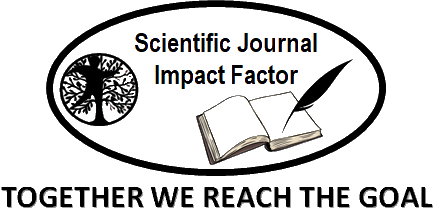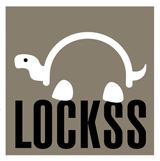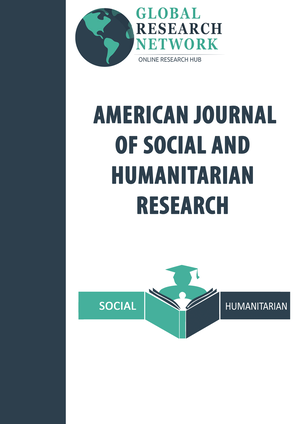The Constructed Awareness Orientation Theory and Typology: A New Model of Personality for Psychotherapy
Abstract
This conceptual article introduces Constructed Awareness, an emerging therapeutic approach to treating trauma that incorporates a personality theory known as orientation and a typology of six personality expressions called orientation styles. The first section presents Constructed Awareness as a treatment model. The second section explores the Constructed Awareness theory of orientation and personality, defining these concepts while addressing longstanding myths and challenges in the study of personality. The third and fourth sections delve into the components and structure of orientation. The article concludes with a discussion of the implications of applying the Constructed Awareness orientation model in clinical practice and suggests directions for future research, offering a novel framework for integrating personality theory into trauma therapy.
Keywords
Full Text:
PDFReferences
Allport, G. W. (1961). Pattern and growth in personality. Holt, Rinehart, & Winston.
American Psychological Association. (2016). APA dictionary of psychology (2nd ed.).
Orr, T., McMahan, O., & Gladden, D. (2024). Treating traumatic memories: A comparative study of the effectiveness of EMDR and Constructed Awareness. Tennessee Counseling Association Journal, 9(1), 86-100. https://www.tcacounselors.org/assets/Volume%209%20Number%201%202024.pdf
Barrett, L. F. (2017a). The theory of constructed emotion: An active inference account of interception and categorization. Social Cognitive and Affective Neuroscience, 12(11), 1833-1833. https://doi.org/10.1093/scan/nsx060
Barrett, L. F. (2017b). How emotions are made: The secret life of the brain. Houghton Mifflin Harcourt.
Bergner, R. (2017). What is a person? What is the self? Formulations for a science of psychology. Journal of Theoretical and Philosophical Psychology, 37, 77-90.
Bergner, R. M. (2020). What is personality? Two myths and a definition. New Ideas in Psychology, 57, 100759. https://doi.org/10.1016/j.newideapsych.2019.100759
Bleidorn, W., Schwaba, T., Zheng, A., Hopwood, C. J., Sosa, S., Roberts, B., & Briley, D. A. (2022). Personality stability and change: A meta-analysis of longitudinal studies. Psychological Bulletin, 148(7-8), 588–619. https://doi.org/10.31234/osf.io/eq5d6
Cervone, D. & Pervin, L. (2013). Personality: Theory and research. Wiley.
Chadha, M. (2018). Reconstructing memories, deconstructing the self. Mind & Language, 34(1), 121-138. https://doi.org/10.1111/mila.12204
Dalal, R. S., Meyer, R. D., Bradshaw, R. P., Green, J. P., Kelly, E. D., & Zhu, M. (2015). Personality strength and situational influences on behavior: A conceptual review and research agenda. Journal of Management, 41, 261–287.
Darwin, C. (1872). The expression of the emotions in man and animals.
de Silva, P. (2014). Personality: Philosophical and psychological issues. In: An Introduction to Buddhist Psychology and Counselling. (5th ed., pp. 68-77). Palgrave Macmillan. https://doi.org/10.1057/9781137287557_6
Ekman, P., & Friesen, W. V. (2003). Unmasking the face: A guide to recognizing emotions from facial clues. ISHK.
Faul, L., & LaBar, K. S. (2023). Mood-congruent memory revisited. Psychological Review, 130(6), 1421-1456. https://doi.org/10.1037/rev0000394
Funder, D. (2016). The personality puzzle. Norton.
Gendlin, E. T. (1964). A theory of personality change. In: P. Worchel & D. Byrne (Eds.), Personality change (pp. 1-38). John Wiley & Sons.
Giordano, P. J. (2017). Individual personality is best understood as process, not structure: A Confucian-inspired perspective. Culture & Psychology, 23(4), 502-518. https://doi.org/10.1177/1354067x17692118
Giordano, P. J. (2019). Culture and theories of personality Western, Confucian, and Buddhist perspectives. In: K. D. Keith (Ed.), Cross-cultural psychology: Contemporary themes and perspectives (2nd ed., pp. 661-684). John Wiley & Sons.
Hakulinen, C., Jokela, M., Kivimäki, M., & Elovainio, M. (2020). Personality traits and mental disorders. The Cambridge Handbook of Personality Psychology, 183-192. https://doi.org/10.1017/9781108264822.018
Hrebinnyk, S. (2019). Problems and prospects of individual-typological research in psychology. Psychological journal, 5(11), 149-162. https://doi.org/10.31108/1.2019.5.11.10
John, O. P., Donahue, E. M., & Kentle, R. L. (1991). The Big-Five Inventory-Version 4a and 54. Berkeley, CA: Berkeley Institute of Personality and Social Research, University of California.
Kavirayani, K. (2018). Historical perspectives on personality—The past and current concept: The search is not yet over. Archives of Medicine and Health Sciences, 6(1), 180. https://doi.org/10.4103/amhs.amhs_63_18
Knott, L. M., Threadgold, E., & Howe, M. L. (2014). Negative mood state impairs false memory priming when problem-solving. Journal of Cognitive Psychology, 26(5), 580-587. https://doi.org/10.1080/20445911.2014.922091
Levine, P. A. (2015). Trauma and memory: Brain and body in a search for the living past: A practical guide for understanding and working with traumatic memory. North Atlantic Books.
Larsen, R. & Buss, D. (2017). Personality: Domains of knowledge about human nature. (6th ed.). McGraw-Hill.
Li, N., Barrick, M. R., Zimmerman, R. D., & Chiaburu, D. S. (2014). Retaining the productive employee: The role of personality. Academy of Management Annals, 8, 347–395.
Marcos, F., & Calero-Elvira, A. (2015). Effects of thought stopping and cognitive defusion on discomfort and the ability to deal with negative thoughts. Behavioral Psychology/Psicologia Conductual, 23, 107-126.
Mayer, J. D. (2020). An integrated approach to personality assessment based on the personality systems framework. Journal of Personality Assessment, 102(4), 443-456. https://doi.org/10.1080/00223891.2018.1555539
McAdams, D. (2009). The person: An introduction to the science of personality psychology (5th Ed.). Wiley.
McCrae, R. R., & Costa, P. T. (2008). Empirical and theoretical status of the five-factor model of personality traits. In G. Boyle, G. Matthews & D. H. Saklofske (Eds.), The Sage handbook of personality theory and assessment (pp. 273-294). Sage.
Mischel, W. (1968). Personality and assessment. John Wiley & Sons.
Ossorio, P. (1978). Personality and personality theories (LRI Report No. 16). Linguistic Research Institute.
Oxford English Dictionary. (n.d.). Personality. In Oxford English Dictionary. Retrieved February 29, 2024, from https://doi.org/10.1093/OED/3075280641
Peeters, M. A. G., van Tuijl, H. F. J. M., Rutte, C. G., & Reyman, I. M. M. J. (2006). Personality and team performance: A meta-analysis. European Journal of Personality, 20, 377-396.
Pompeo, A. M., & Levitt, D. H. (2014). A path of counselor self-awareness. Counseling and Values, 59(1), 80-94. https://doi.org/10.1002/j.2161-007x.2014.00043.x
Roberge, M. E., & Huang, W. R. (2019). A conceptual model of individual and collective personality in motion. Journal of Organizational Psychology, 19(2), 131-143. https://doi.org/10.33423/jop.v19i2.2049
Roberts, B. W., Walton, K. E., & Viechtbauer, W. (2006). Patterns of mean-level change in personality traits across the life course: A meta-analysis of longitudinal studies. Psychological Bulletin, 132, 1–25.
Schwartz, W. (2019). Descriptive Psychology and The Person Concept. Academic Press-Elsevier.
Siegel, D. J. (2009). Emotion as integration: A possible answer to the question, what is emotion? In D. Fosha, D. Siegel, & M. Solomon (Eds.), The healing power of emotion: Affective neuroscience, development, and clinical practice (pp. 145-171). W. W. Norton & Co.
Tasselli, S., Kilduff, M., & Landis, B. (2018). Personality change: Implications for organizational behavior. Academy of Management Annals, 12(2), 467-493. https://doi.org/10.5465/annals.2016.0008
Turcotte, J., Lakatos, L., & Oddson, B. (2023). Self-regulation of attention may unify theories of mindfulness. Psychology of Consciousness: Theory, Research, and Practice, 10(2), 103–114. https://doi.org/10.1037/cns0000310
Willis, G. M. (2018). Why call someone by what we don’t want them to be? The ethics of labeling in forensic/correctional psychology. Psychology, Crime & Law, 24(7), 727-743. https://doi.org/10.1080/1068316x.2017.1421640
Yeager, D. S., Johnson, R., Spitzer, B. J., Trzesniewski, K. H., Powers, J., & Dweck, C. S. (2014). The far-reaching effects of believing people can change: Implicit theories of personality shape stress, health, and achievement during adolescence. Journal of Personality and Social Psychology, 106(6), 867–884. https://doi.org/10.1037/a0036335
DOI: http://dx.doi.org/10.52155/ijpsat.v46.2.6589
Refbacks
- There are currently no refbacks.
Copyright (c) 2024 Tyler Orr

This work is licensed under a Creative Commons Attribution 4.0 International License.



















